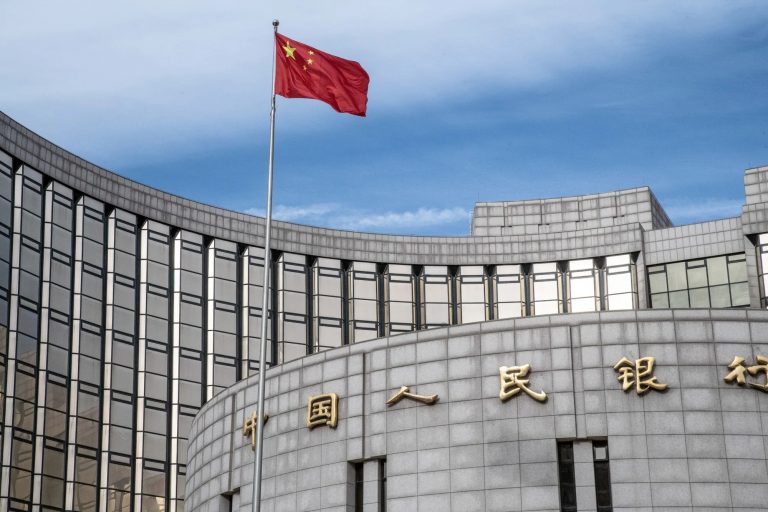
The PBoC has lowered key policy rates, such as the one-year loan prime rate (LPR) and the seven-day reverse repo rate, to reduce borrowing costs and encourage lending. For instance, in late 2024, the PBoC cut the one-year LPR to 3.35% and the five-year LPR to 3.85%, alongside reductions in the medium-term lending facility (MLF) rate. The PBoC has cut the reserve requirement ratio (RRR) multiple times, with a notable 50 basis point reduction in September 2024, freeing up approximately 1 trillion yuan ($141 billion) in long-term liquidity for banks to lend.
The PBoC has injected significant liquidity through open market operations, including reverse repos and MLF loans. For example, in October 2024, it injected 800 billion yuan via the MLF to maintain ample liquidity in the banking system. These actions are part of a broader stimulus package to counter economic challenges like deflationary pressures, a property sector slump, and weak consumer demand. The PBoC has also introduced measures to support the property market, such as lowering mortgage rates and easing home purchase restrictions, and has launched programs like a 500 billion yuan relending facility for tech innovation and a 300 billion yuan bond-buying program to stabilize markets.
The actions taken by the People’s Bank of China (PBoC)—cutting interest rates, reducing reserve requirements, and injecting liquidity—carry significant implications for China’s economy and highlight a growing economic divide, both domestically and globally. Lower interest rates and increased liquidity aim to boost lending, encourage investment, and stimulate consumer spending. The RRR cuts, freeing up ~1 trillion yuan, and liquidity injections (e.g., 800 billion yuan via MLF) provide banks with more capacity to lend to businesses and households. This is critical for countering deflationary pressures and supporting sectors like manufacturing and technology.
Register for Tekedia Mini-MBA edition 19 (Feb 9 – May 2, 2026): big discounts for early bird.
Tekedia AI in Business Masterclass opens registrations.
Join Tekedia Capital Syndicate and co-invest in great global startups.
Register for Tekedia AI Lab: From Technical Design to Deployment (next edition begins Jan 24 2026).
Excessive liquidity could lead to asset bubbles, particularly in real estate or stock markets, despite targeted measures to stabilize property. Weak consumer confidence may limit the effectiveness of these policies, as households prioritize saving over spending. Easing mortgage rates, lowering down payment requirements, and supporting developers through relending facilities aim to revive the beleaguered property sector, a key driver of China’s GDP. These measures could stabilize housing prices and restore confidence.
Overreliance on property stimulus may delay structural reforms, and moral hazard could emerge if developers or investors expect repeated bailouts. Demand-side weakness (e.g., low buyer confidence) may blunt these efforts. A stronger Chinese economy could boost global demand for commodities, benefiting exporters like Australia and Brazil, and support supply chains reliant on Chinese manufacturing.
Aggressive monetary easing may weaken the yuan, potentially triggering capital outflows or competitive devaluations in other emerging markets. This could also exacerbate trade tensions if China’s exports become cheaper. These measures aim to reverse deflationary trends, with consumer prices showing mild recovery (e.g., CPI up 0.4% year-on-year in October 2024). Higher liquidity could stimulate demand-driven inflation.
If stimulus overshoots, it could spark inflation, eroding purchasing power, especially for low-income households. Conversely, persistent deflationary pressures (e.g., from weak global demand) could render these measures insufficient. Urban areas, particularly tier-1 cities like Shanghai and Beijing, benefit more from property stimulus and access to credit, widening the gap with rural regions where financial inclusion remains limited.
Lower interest rates benefit asset owners (e.g., property or stock investors), while low-income households, reliant on wages or savings, face reduced returns and higher living costs if inflation rises. The property focus may further entrench wealth inequality, as homeownership becomes harder for younger or less affluent citizens. Large state-owned enterprises and tech firms often access cheaper credit more easily, while small and medium-sized enterprises (SMEs) struggle with tighter lending standards, despite PBoC’s targeted relending programs.
Stimulus prioritizes property and high-tech sectors (e.g., 500 billion yuan for tech innovation), potentially neglecting traditional manufacturing or service industries. This could lead to uneven recovery across sectors. While liquidity boosts export-oriented industries via a weaker yuan, domestic consumption lags due to low consumer confidence and high savings rates, creating an imbalance in growth drivers.
A weaker yuan and export-driven growth could disadvantage other emerging economies competing in global markets, potentially straining trade relations. Meanwhile, China’s stimulus may attract foreign capital, diverting investment from other regions. China’s ability to deploy large-scale stimulus contrasts with smaller economies lacking fiscal or monetary firepower, widening global economic disparities. However, reliance on debt-fueled growth could strain China’s long-term fiscal position compared to less leveraged developed economies.
Younger generations face challenges like high youth unemployment (14.9% in late 2024) and unaffordable housing, despite property stimulus. Policies favoring asset owners may deepen intergenerational inequality, as older, wealthier cohorts benefit disproportionately. The PBoC’s measures are a pragmatic response to China’s economic slowdown, aiming to stabilize growth, revive key sectors, and counter deflation. However, they risk amplifying domestic and global divides—between rich and poor, urban and rural, and China and other economies.



